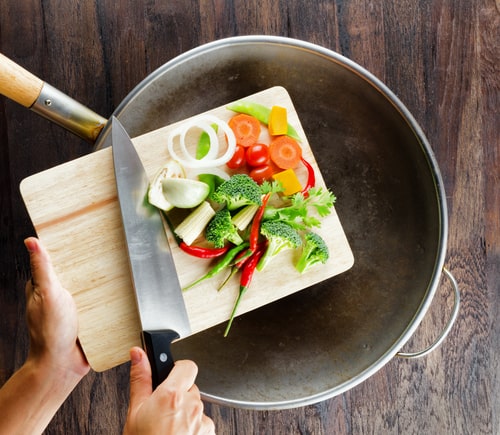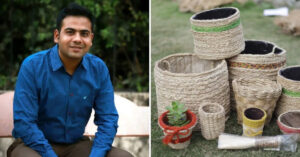These 6 Spots in Your Kitchen Could Be Dirtier Than the Toilet
You'd be surprised to know that our kitchens are often home to more harmful bacteria than our toilets, exposing us to infections and food poisoning.

If you think the toilet is the dirtiest place in your home, you might want to rethink that idea. While it surely is a dirty place, there are several other objects that, surprisingly, harbour far more bacteria than the toilet seat and most of them you will find in your kitchen. At a time when we are all spending more time at home and taking precautions to stay safe from infection, it might be a good idea to examine these daily use objects more closely and give them the natural cleaning treatment.
Kitchen Sinks
Dr Charles Gerba, a microbiologist at the University of Arizona found in a now much-cited study, that the toilet in most homes is much cleaner than the kitchen sink. Even if you are meticulous about tidying up the kitchen, wiping down counters, scrubbing sinks and disinfecting floors, you’d be surprised to know that your kitchen could be home to hidden bacteria, often hundreds of thousands of them per square inch. The kitchen sink is contaminated by the bacteria in meat and vegetables, transferred when we wash, cut and drain the dirt from them into the sink.
The good news is that disinfecting the sink is easy: Disinfect it with hot, soapy water daily, especially if it has been in contact with raw poultry or meat. Be careful to scrub the sides and bottom of the sink with baking soda and scrub the sink strainer twice a week. To finish, apply a spray of vinegar to the sink and let it air.
Cutting Boards
Cutting boards are are the primary work surface in your kitchen, used for everything from chopping vegetables to skinning and pounding meat. They are reused multiple times for a variety of purposes and get worn out over time. Naturally, this means they are among the most contaminated items in our kitchens. Bacteria becomes trapped in the microscopic grooves and knife scars that form as cutting boards are worn out, exposing you to dangerous bacteria like E.coli and salmonella. Use a chopping board to cut raw meat and then use it to chop veggies, and you run the risk of cross-contamination. The same is the case with different vegetables and leafy greens. It is thus important to sanitise cutting boards with hot water and dish soap after every use, especially when they come in contact with raw meat. To further reduce the risk of cross-contamination of other dishes, use a separate scrub for cutting boards.
In humid conditions especially, bacteria from meat tend to multiply if chopping boards are not washed immediately or stored overnight. So it is best to avoid letting food residues dry on the chopping board. Cross-contamination of foods can be avoided by having separate chopping boards for vegetables and meats.
The material of your cutting board might matter more than you think. Plastic chopping boards are the most likely to harbour bacteria and expose you to the risk of food poisoning than wood or stainless steel. While a new plastic chopping board is easy to clean and disinfect, as it ages and develops knife scars, it becomes harder to sanitise effectively. A knife-scarred surface also means that tiny bits of plastic are getting into your food.
Clean your board with a 50/50 solution of vinegar and water and let it set five to ten minutes. Get rid of odours by sprinkling salt on the board and rubbing with a slice of lemon.
Another important step in sanitising your cutting board is letting it dry completely. Moist boards attract bacteria and fungus. Stand your board up in a place where air circulates.
It is also a good practice to replace a chopping board once it is worn out, has too many knife scars and becomes difficult to clean.
Reusable Grocery Bags
While they are the No. 1 way to eliminate unnecessary plastic from disposable plastic bags, reusable bags are often contaminated by bacteria from fresh produce, leafy greens and meat. The risk of bacterial contamination increases if the bags are used repeatedly for multiple purposes without washing. Like anything else that we regularly reuse, grocery bags too need to be washed periodically. Hand washing or machine washing of the bags significantly reduced the potential for bacterial growth and contamination of foods. It is also advisable to have separate bags for meat, vegetables and other groceries to avoid the spread of bacteria.
Kitchen Towels and Sponges
If there’s one object in the kitchen that sees the most usage, it is the sponge and towel used to scrub dishes and wipe them dry. Not just are these items used for a number of dishes, they tend to remain damp through the day. Kitchen towel are used for a number of purposes, from wiping dishes and hands to cleaning a number of other kitchen surfaces and appliances. All this makes them the perfect environment for bacterial to grow and flourish. They also pick up food particles that bacteria can feed on.
Kitchen sponges not only act as reservoirs of microorganisms but also as transfer them over a number of surfaces, which can lead to cross-contamination of hands and food.
To effectively sanitise a dish sponge or cloth effectively, wash it every week (or more frequently in case of heavy usage) with hot water and laundry detergent such as The Better Home. Sanitise wet sponges by microwaving or boiling them for 1-2 minutes. Alternately, soak the sponge in undiluted vinegar for a few minutes before washing and drying. Finally, sponges and towels accumulate bacteria with use, so replace scrubbers and towels every month or two.
Appliance Handles
One spot that sees heavy usage and requires regular cleaning is the fridge door handle and the handles of other regularly used appliances such as the microwave. Think about how many times a day the fridge is opened and shut. If you hang a towel there, that’s another place where bacteria are trapped. Refrigerator handles are constantly exposed to dirty hands and cooking grease Yet, these spaces might not be cleaned as regularly as other surfaces around the kitchen. Since these spaces are hard to sanitise with cleaning sprays, they hide potentially harmful bacteria. Disinfect the handles of regularly used appliances with a solution of vinegar and water. If they are heavily contaminated, apply a paste of baking soda and let sit overnight before wiping off the following day.
Kitchen Countertops
Another high-use surface that is exposed to a bacteria from a number of food items, dishes and other objects is the kitchen countertop, although it is wiped down several times a day. Kitchen counters are found to be dirtiest near the sink as this is where dirty dishes are piled up and food is washed. This area is also often washed with the same sponge used to scrub used dishes, spreading the germs all over the countertop. Use a natural, bioenzyme-based cleaner to clean your countertop before wiping down with a dry cloth.
This story made me
- 97
- 121
- 89
- 167
Tell Us More
We bring stories straight from the heart of India, to inspire millions and create a wave of impact. Our positive movement is growing bigger everyday, and we would love for you to join it.
Please contribute whatever you can, every little penny helps our team in bringing you more stories that support dreams and spread hope.




















